Lionel Classic Period Crane Cars
All information and trains supplied by Russ MacNair unless otherwise noted
Click or Scroll Down
Lionel No. 810 Crane Cars
Lionel No. 2810 Crane Cars
Lionel No. 810 Crane Cars
Click or Scroll Down
General Information
No. 810 Crane Car with terra cotta cab, peacock blue boom, and maroon roof (1930)
No. 810 Crane Car with terra cotta cab, peacock blue boom, and maroon roof (1931-1934)
No. 810 Crane Car with cream cab, bright green boom, and red roof (1935)
No. 810 Crane Car with cream cab, bright green boom, and red roof (1936-1939)
General Information
The Lionel No. 810 Crane Cars were introduced in 1930 and were issued through 1942. The crane cars have three control knobs located at the rear of the cab to control the movement of the cab, boom, and hook. The lower knob operated the rotation of the cab. The upper short knob operated the vertical movement of the boom. The upper long knob operated the vertical movement of the hook. The No. 810 Crane Cars always had manual couplers.
The No. 810 Crane Cars measure 16-inches in length (including the boom). The crane cars had contrasting colors for the cab and roof. The frames were always black. The crane cars were identified by a plate at the rear of the cab.
Variations of the No. 810 Crane Cars include different colors for the cab, roof, and boom; brass or nickel trim; and aluminum or black diecast control knobs. Early crane cars had latch couplers. Later crane cars had manual early style box couplers.
No. 810 Crane Car with terra cotta cab, peacock blue boom, and maroon roof (1930), The crane cars have aluminum control knobs, brass trim, cream painted cab windows, and nickel journals. The crane cars have latch couplers.
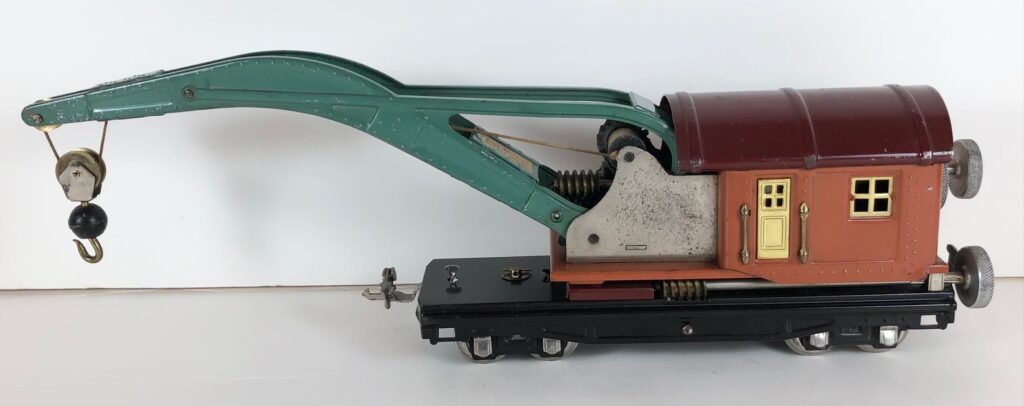
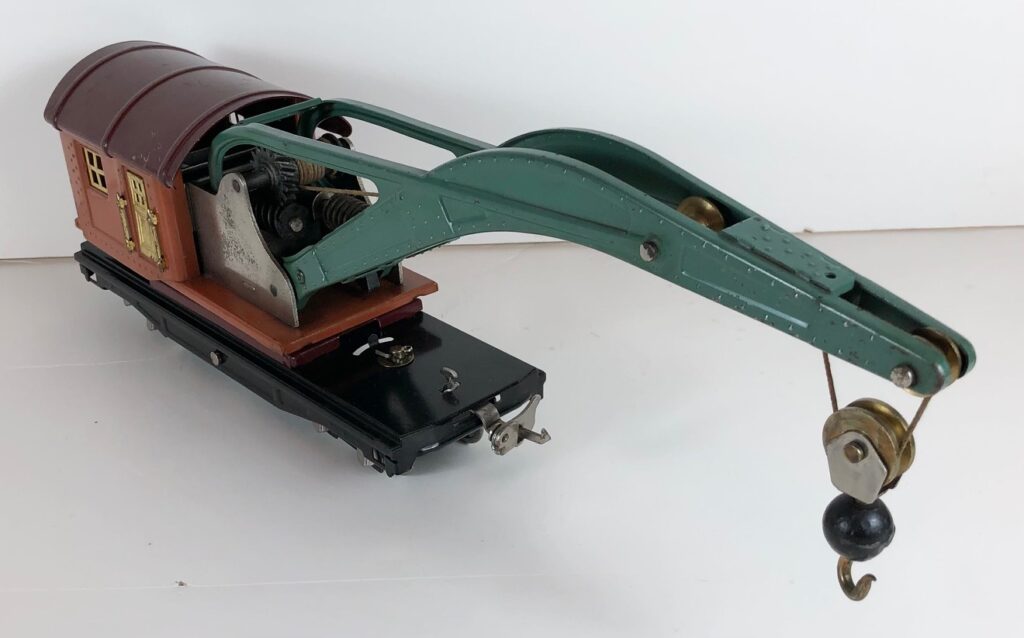
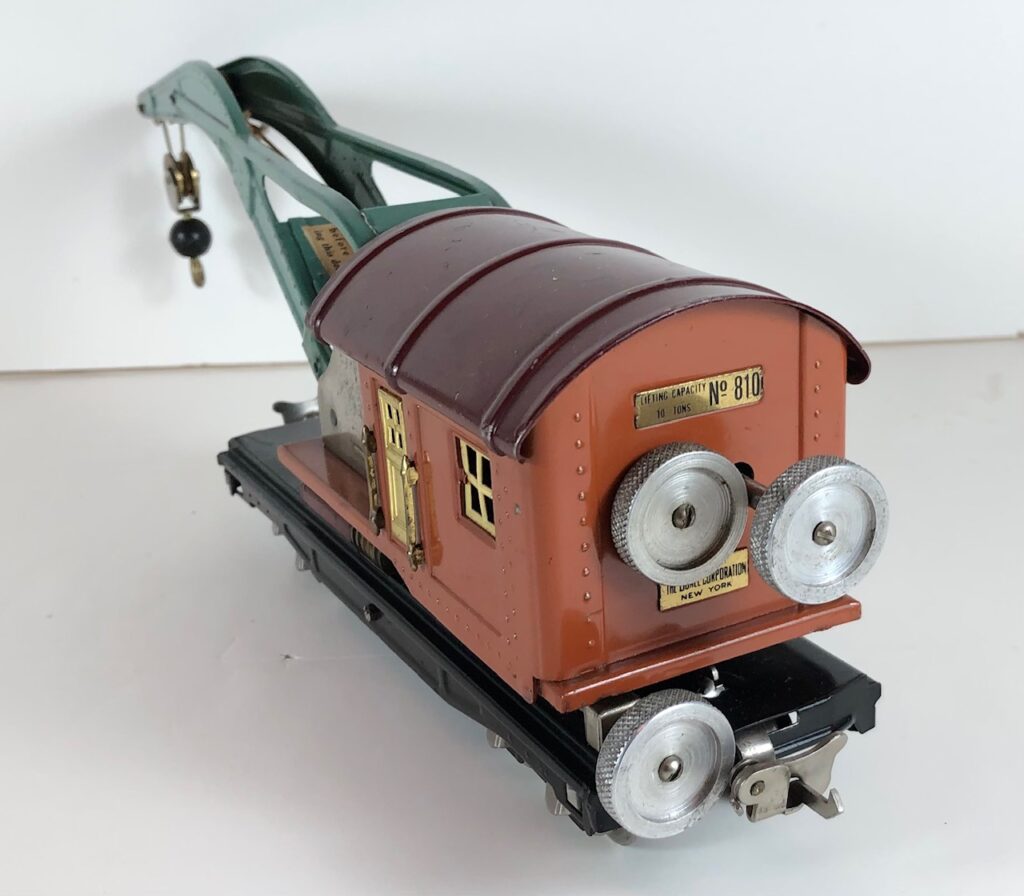

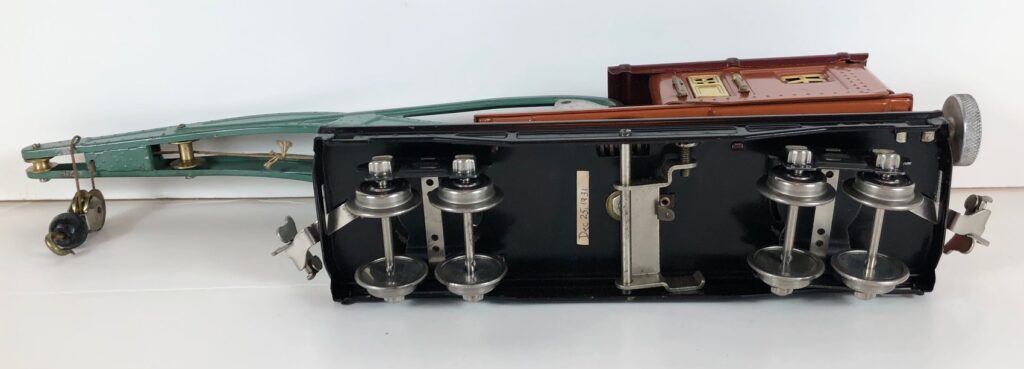
No. 810 Crane Car with terra cotta cab, peacock blue boom, and maroon roof (1931-1934), The crane cars have aluminum control knobs, brass trim and cab windows, and copper journals. The crane cars have latch couplers.
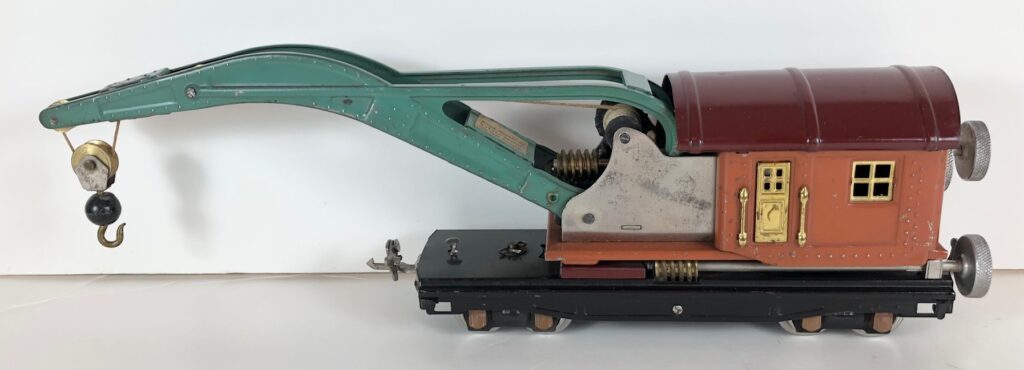
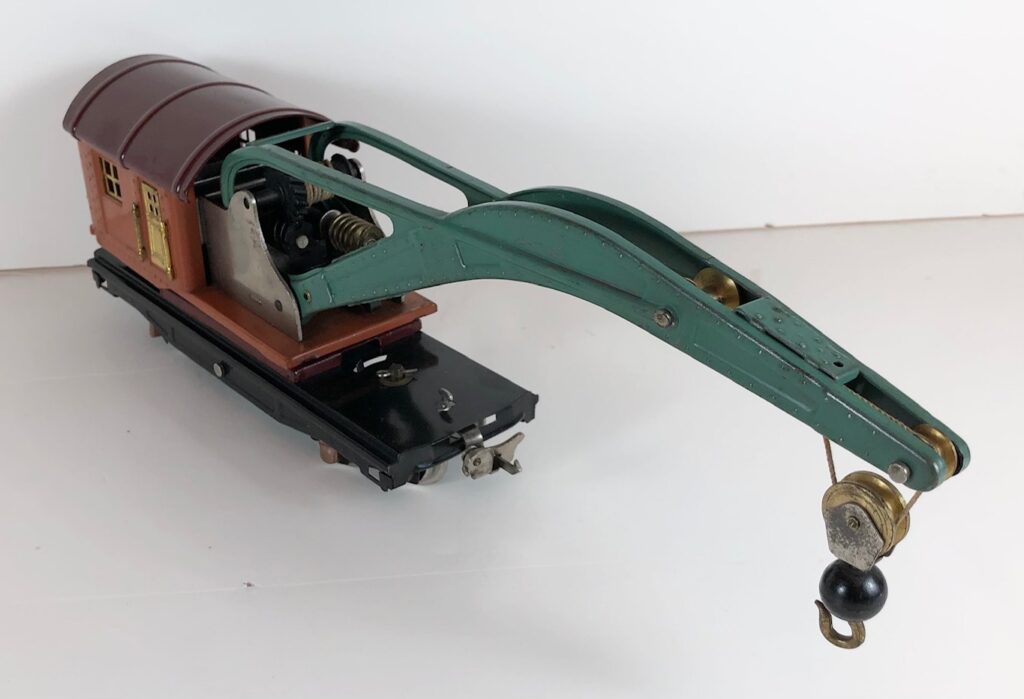
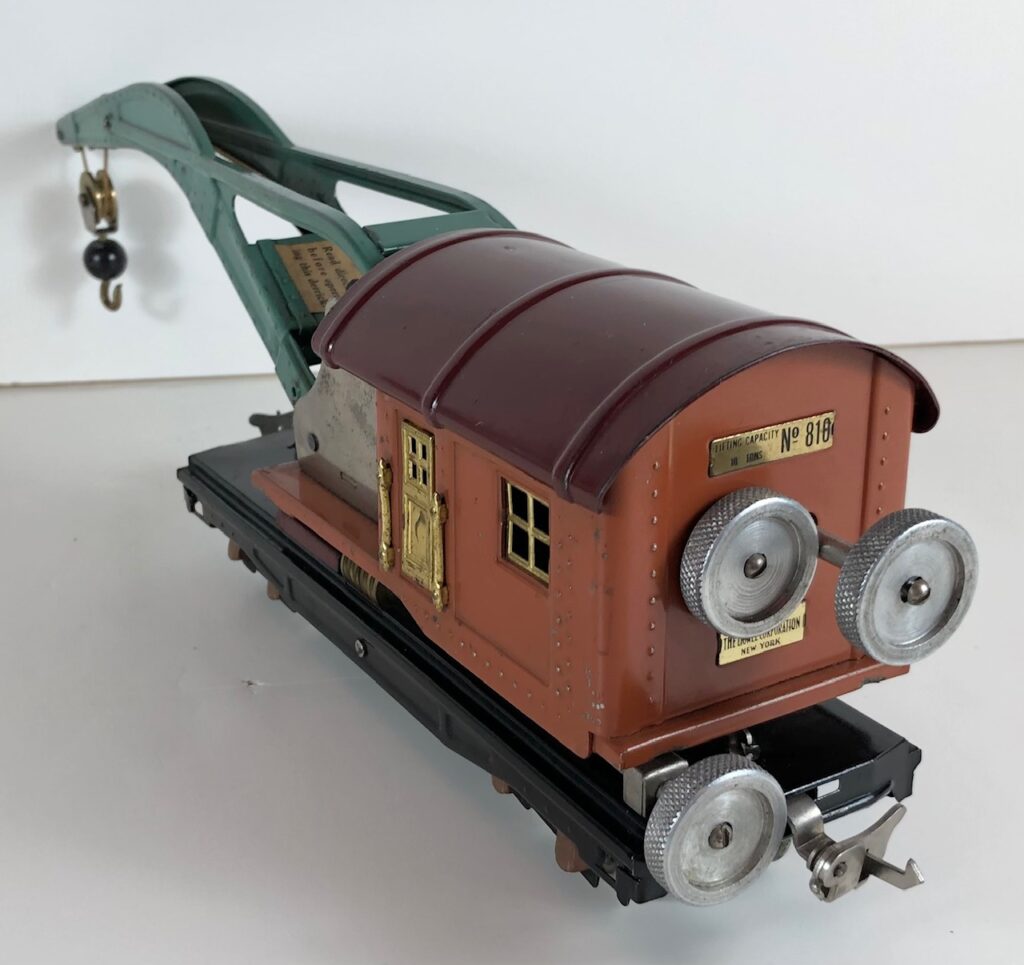

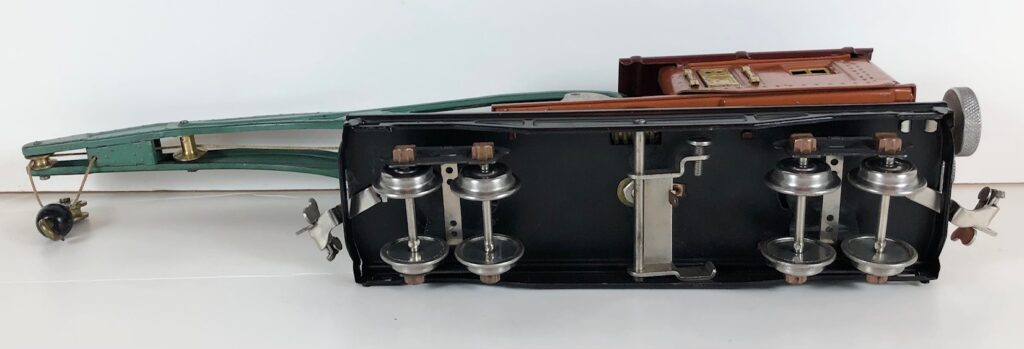
No. 810 Crane Car with cream cab, bright green boom, and red roof (1935), The crane cars have black control knobs, nickel trim and cab windows, and nickel journals. The crane cars have latch couplers.
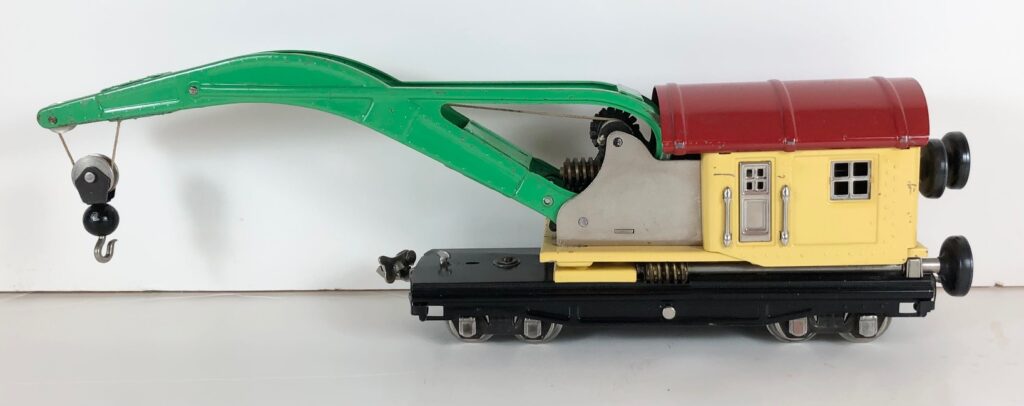
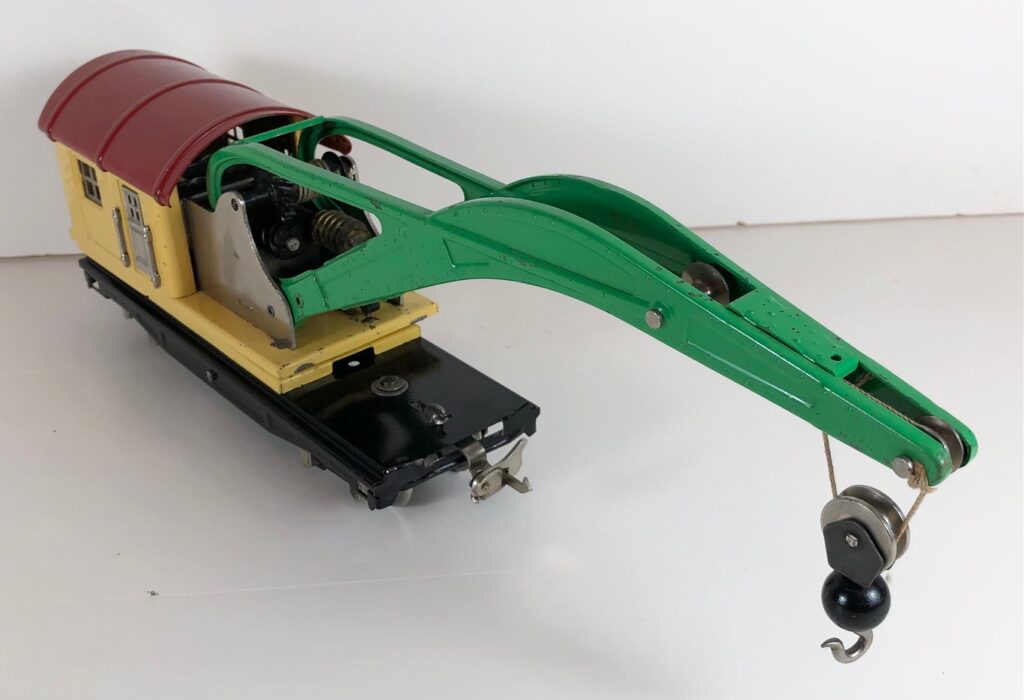
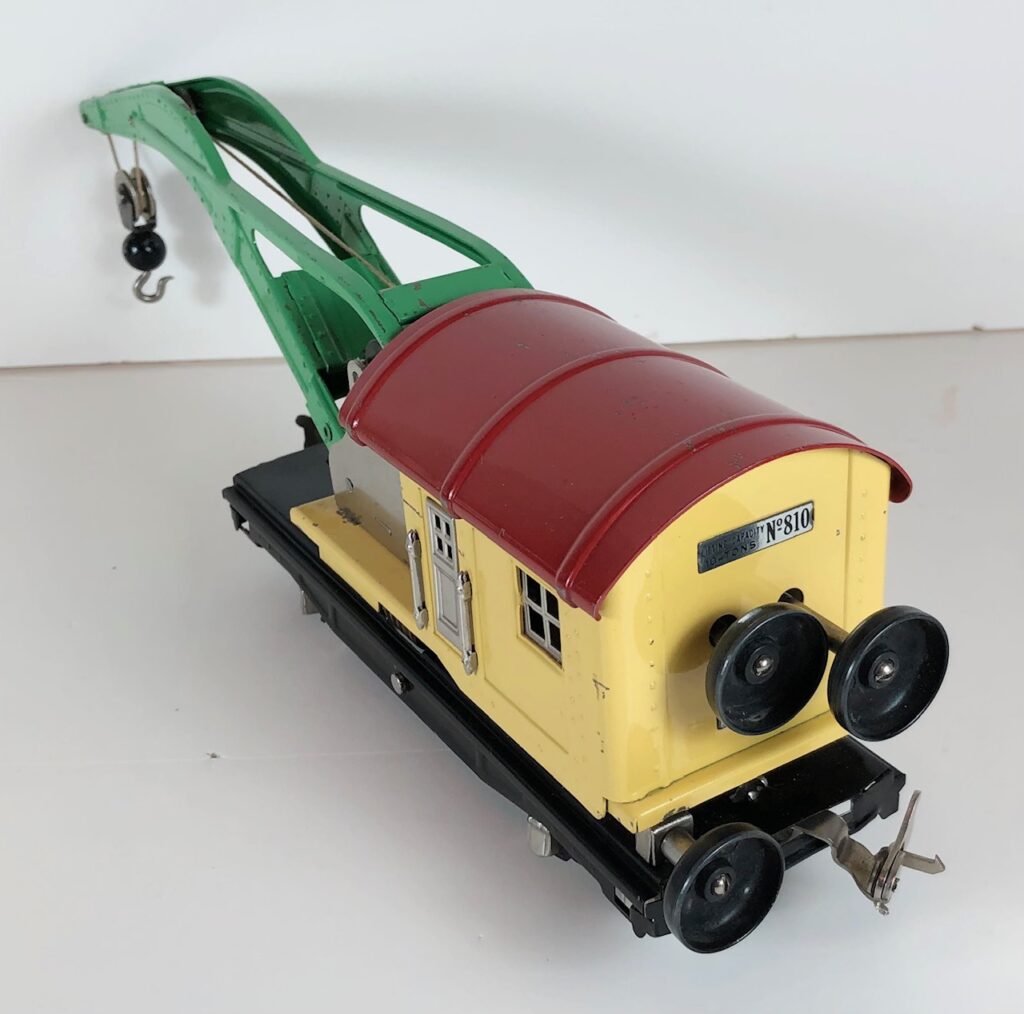

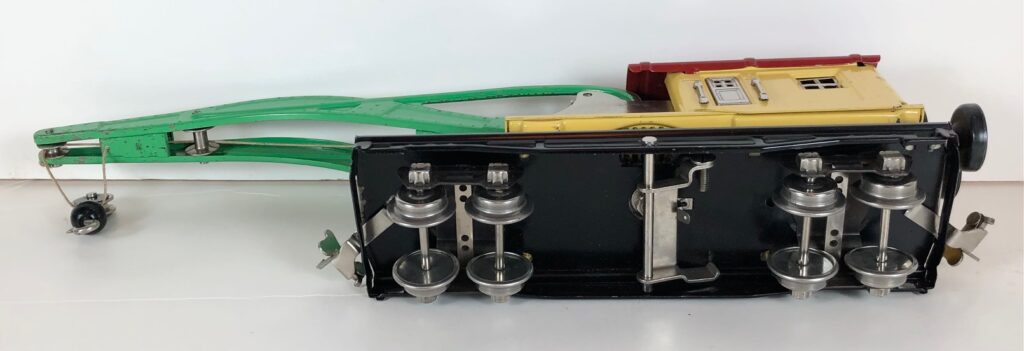
No. 810 Crane Car with cream cab, bright green boom, and red roof (1936-1939), The crane cars have black control knobs, nickel trim and cab windows, and nickel journals. The crane cars have manual early style box couplers.
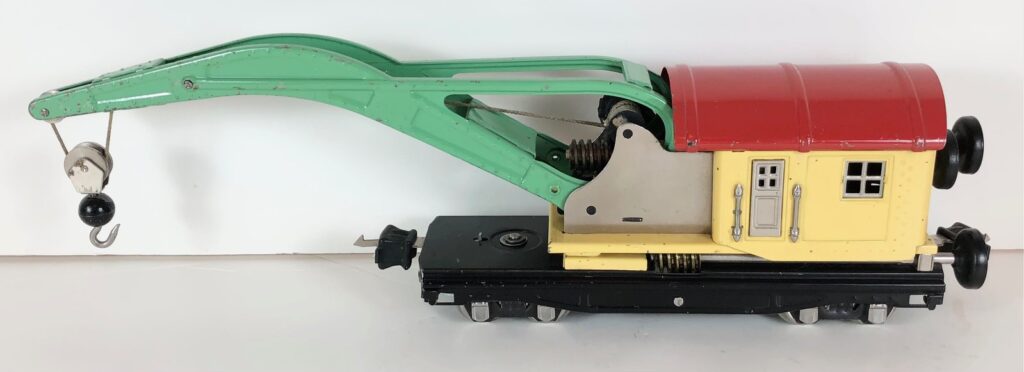
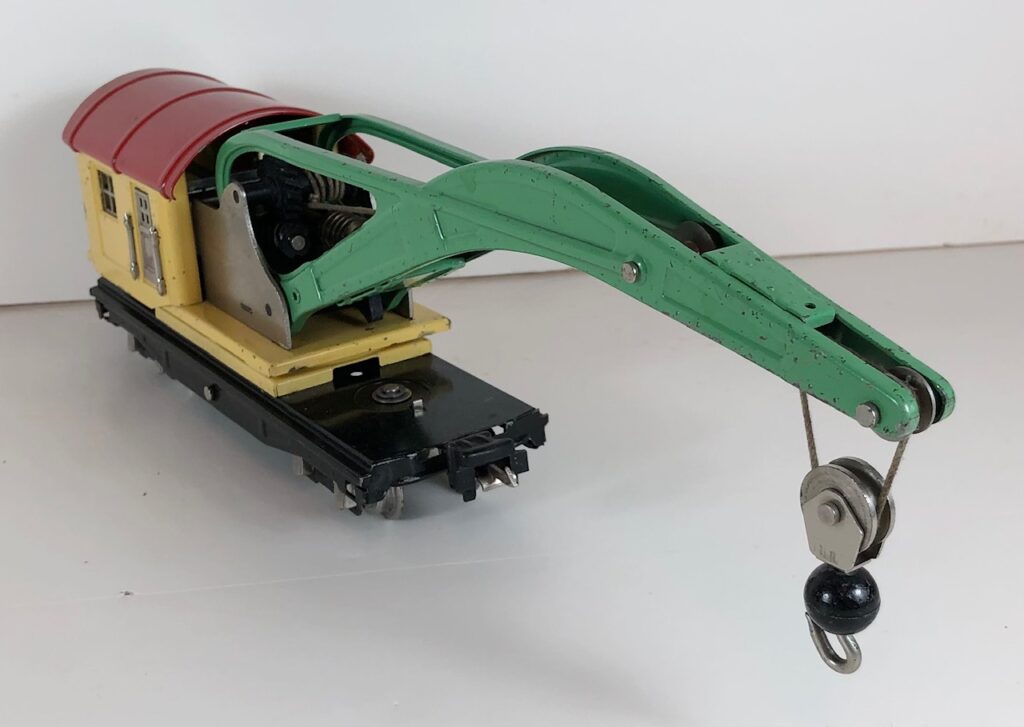
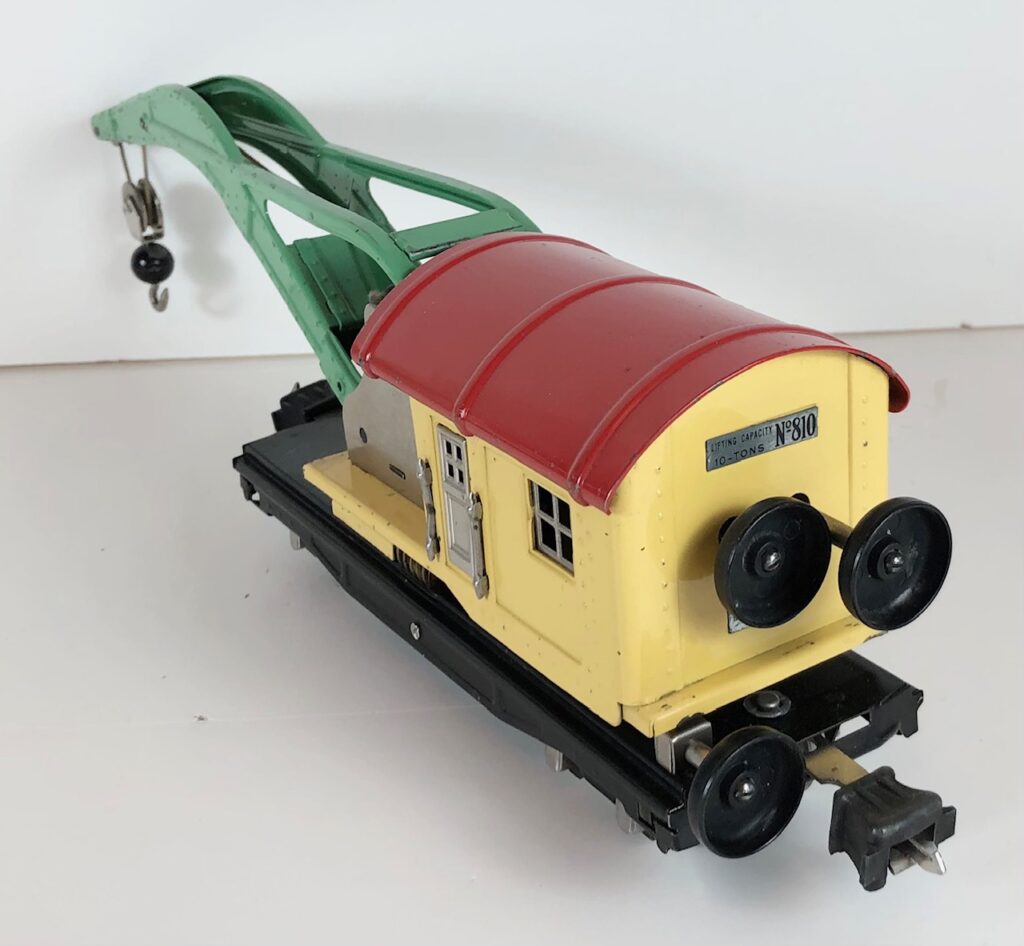
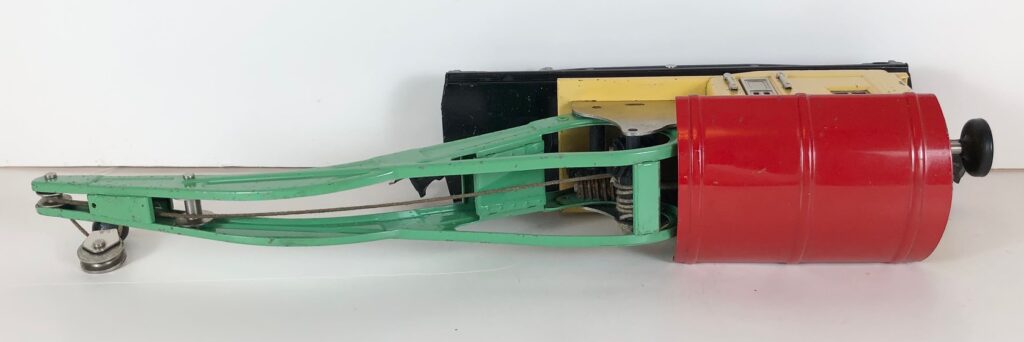
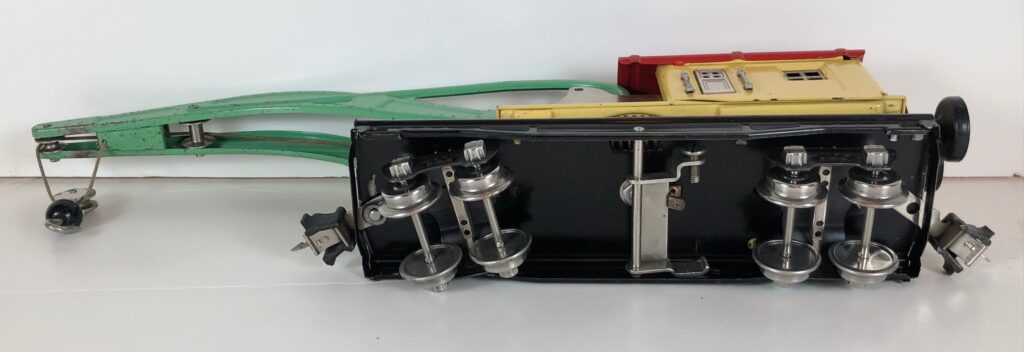
Lionel No. 2810 Crane Cars
Click or Scroll Down
General Information
No. 2810 Crane Car with cream cab, bright green boom, and red roof (1938-1939)
No. 2810 Crane Car with cream cab, bright green boom, red roof, and “deep dish” frame (1941-1942)
General Information
The Lionel No. 2810 Crane Cars were introduced in 1938 and were issued through 1942. The crane cars have three control knobs located at the rear of the cab to control the movement of the cab, boom, and hook. The lower knob operated the rotation of the cab. The upper short knob operated the vertical movement of the boom. The upper long knob operated the vertical movement of the hook. The No. 2810 Crane Cars had either one manual and one operating coupler or two operating couplers.
The No. 2810 Crane Cars measure 16-inches in length (including the boom). The crane cars had contrasting colors for the cab and roof. The frames were always black. The crane cars were identified by a plate at the rear of the cab.
Variations of the No. 2810 Crane Cars were limited to the color of the journals and the type of couplers. Early crane cars had early style box couplers. Later crane cars had late style box couplers.
No. 2810 Crane Car with cream cab, bright green boom, and red roof (1938-1939), The crane cars have black control knobs, nickel trim and cab windows, and nickel journals. The crane cars have one manual (rear) and one operating early style box coupler.
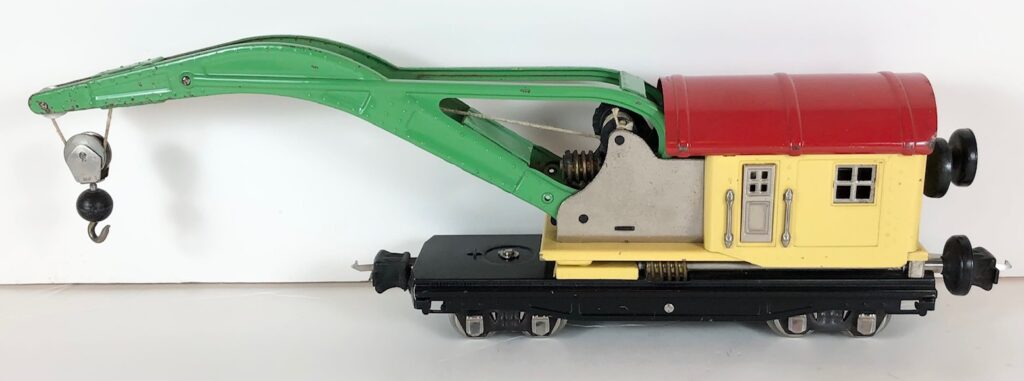
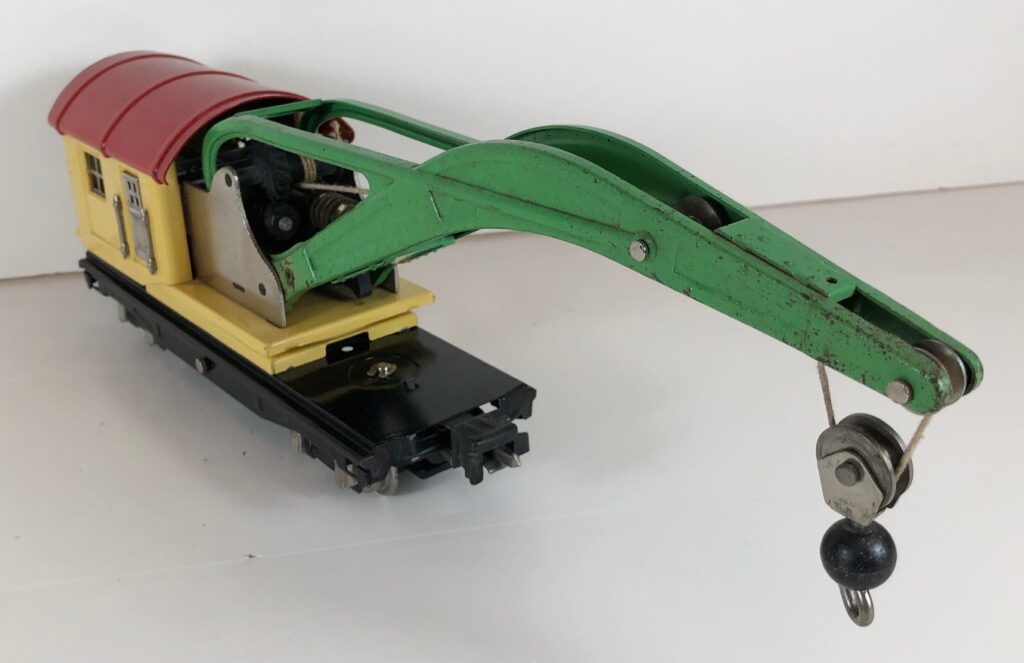
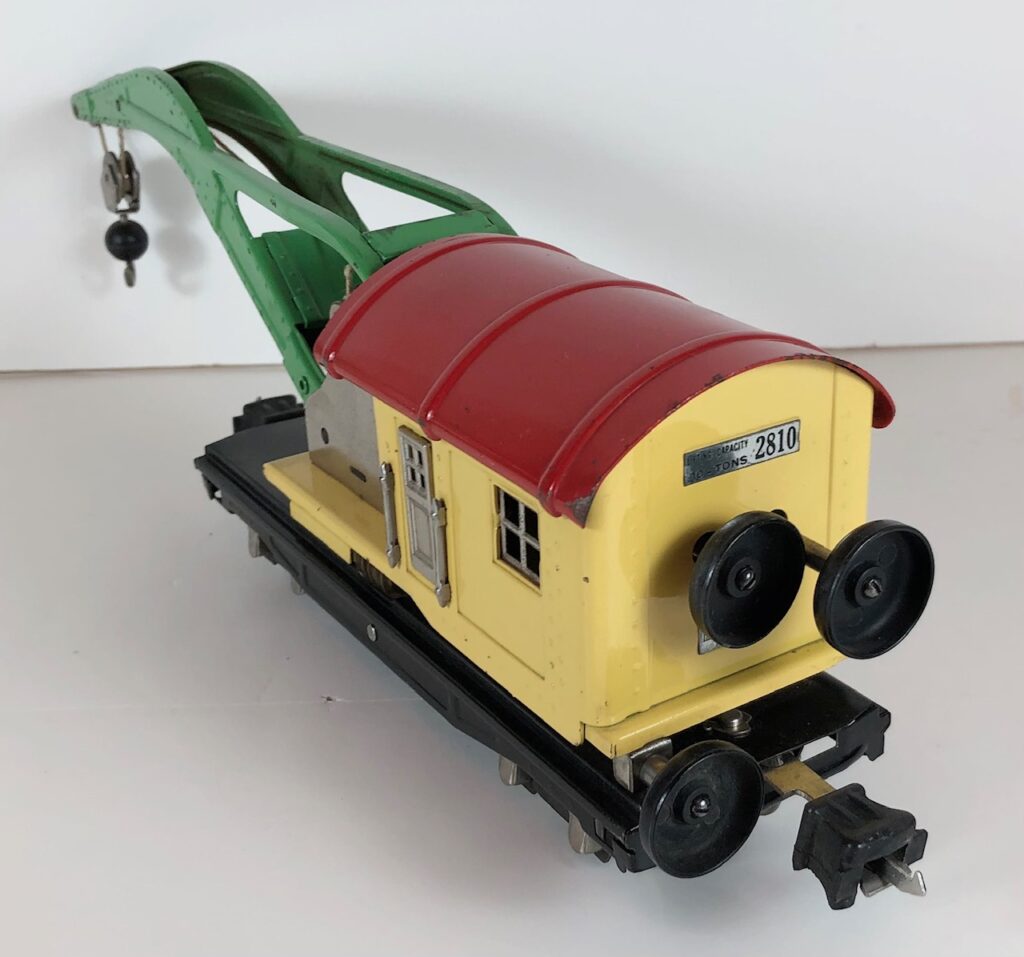


No. 2810 Crane Car with cream cab, bright green boom, red roof, and “deep dish” frame (1941-1942), The crane cars have black control knobs, nickel trim and cab windows, and black journals. The lower control knob is much smaller than the two upper knobs. The crane cars have operating late style box couplers. The frame was modified to accommodate the couplers used on the car.
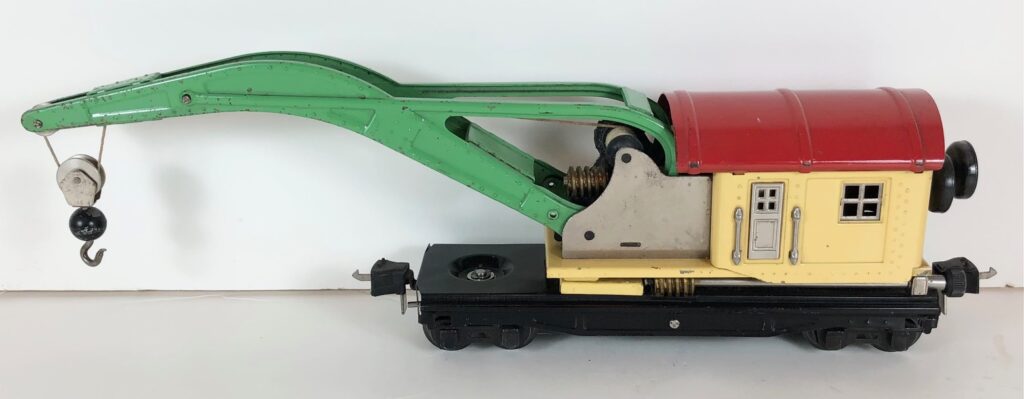
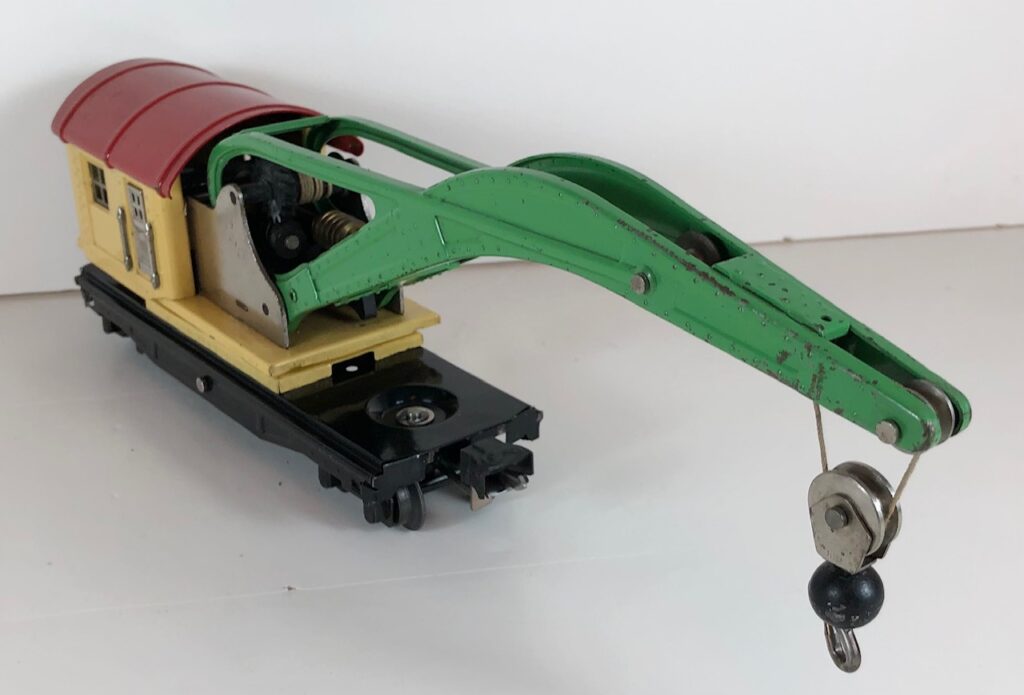
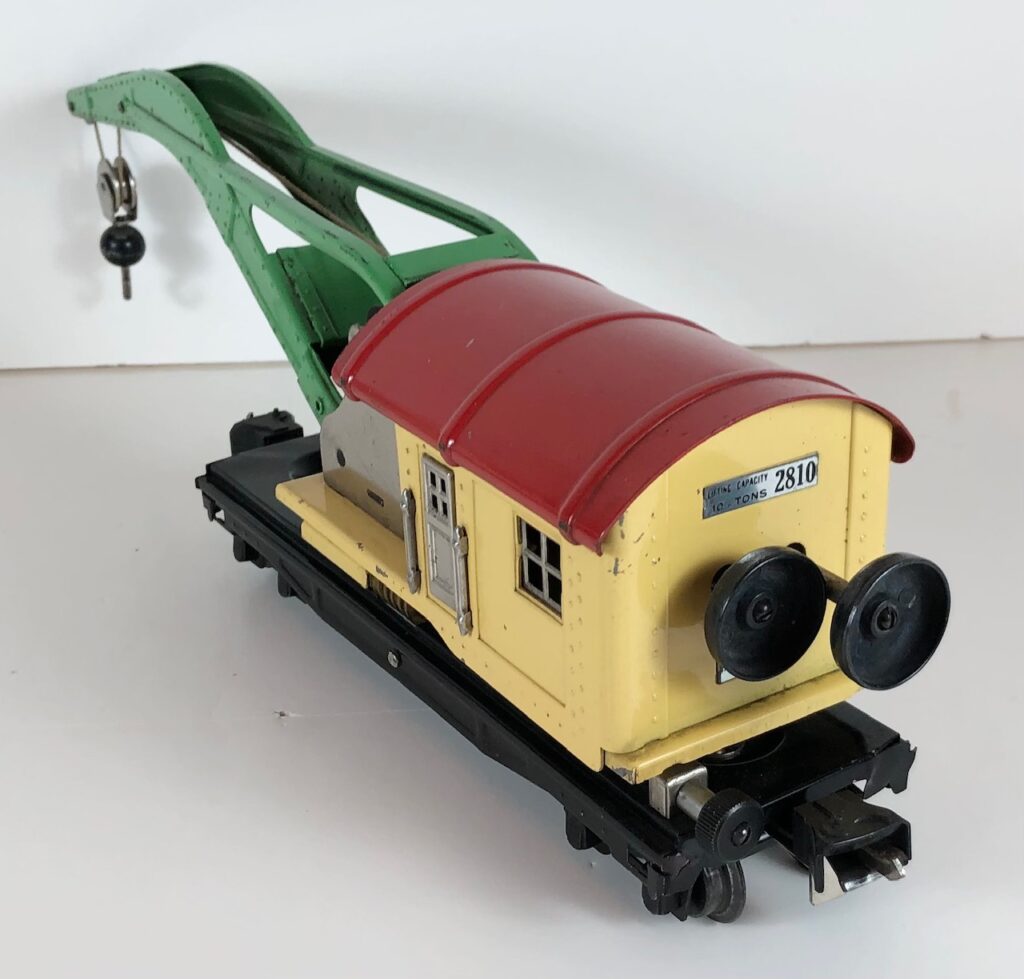

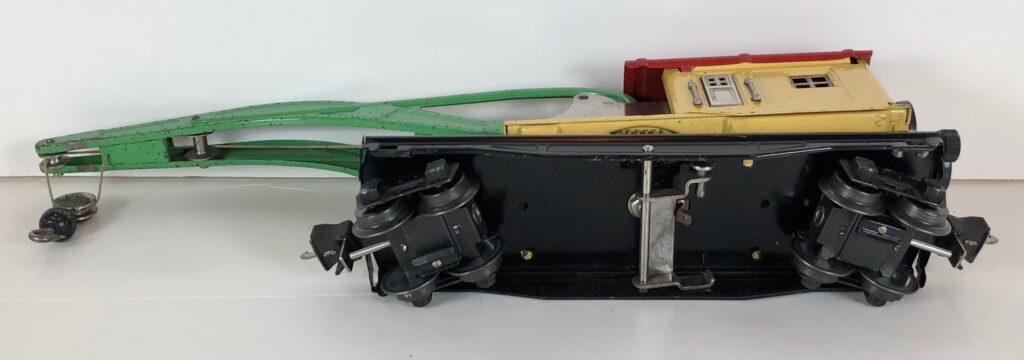
WHERE WOULD YOU LIKE TO GO NOW ?


